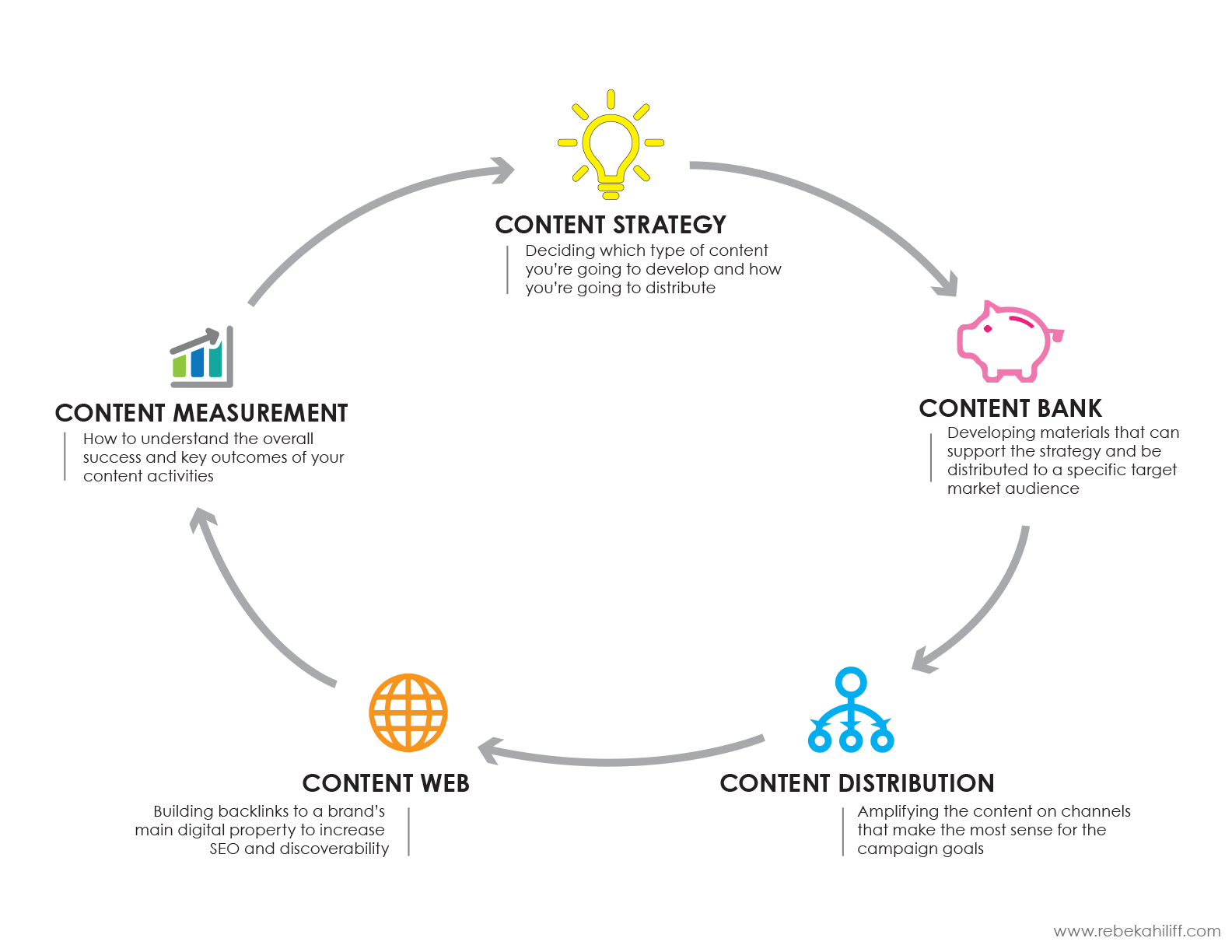 In Alan Jacobs’ How To Think: A Survival Guide For A World At Odds, he makes a poignant observation within the first 30 pages of the book:
In Alan Jacobs’ How To Think: A Survival Guide For A World At Odds, he makes a poignant observation within the first 30 pages of the book:
Whoever it was who first said that happiness is something one cannot aim straight at, but rather can achieve only by focusing on other good things, could have said it about thinking and been equally correct.
If you are a communications professional, this statement will likely stop you dead in your tracks, as it did me.
Why?
Because this is likely the best summation of the challenges of our profession.
We are tasked with aiming directly at things (such as marketers and advertisers) and expected to do so according to a set of arbitrary rules (set forth by a governing body most of us aren’t involved with directly).
And yet, when we get down to the sheer art of it, aiming directly at outcomes is contrary to the “art form” itself.
The Art of PR and Communication
Let me be more clear.
Whoever was first in saying PR is something you can’t aim straight at, but can achieve by focusing on other good things (relationships, storytelling, good conversation skills, reading, managing expectations, being intuitive and attuned) could have said it about thinking and been equally correct.
This is not to say that the “art of PR and communications” cannot and should not have science applied to it.
I spent six years of my life building attribution and measurement technology at AirPR Software to meet those needs.
My point is only to acknowledge why it is so extraordinarily difficult to be in the profession at present.
While there are massive opportunities for PR to guide larger business strategies, and influence outcomes, we still face the challenge of an archaic framework that plops us squarely into two categories: media relations and event coordination.
For example, the CEO of a relatively new entrant technology company or a local ice cream shop decides they’re ready to get out there. They talk to a few knowledgeable folks, and everyone says the same thing, “Oh! You need PR!”
You Need PR
What does that mean?
Is it that they need relationships with the public in order to really get their business off the ground? Is it to spark investor interest, or to stroke the egos of their founders? Perhaps it’s to increase sales or attract celebrities?
That’s a pretty big ask of one professional.
Would we ask an orthopedic surgeon to deliver a baby? Or a divorce attorney to draw up a legal contract for a business entity?
Thinking broadly about PR is often completely unclear and elusive. Not to mention impossible.
It takes years to build a solid reputation, to pull ahead of competitors, to build a business, and to become a media mainstay.
And yet, we often expect PR to swoop in and do it in less than six months.
No wonder PR consistently ranks in the “Top 10 Most Stressful Jobs” year after year, or basically since the invention of the printing press.
Industry leaders such as Gini Dietrich and Deirdre Breakenridge give us good, solid direction and are outspoken about the changes occurring.
But it will take the entire industry accepting defeat in one key area: direct PR.
And direct PR, like direct marketing, does not exist. And never will.
We must accept that PR is first an art, and then a science. Not the other way around.
Building a Framework
Our opportunity then is building a framework around solidly-based practices of art.
These allow us to have intelligible conversations about what we bring to the table.
I’m suggesting nothing new here, at least not for seasoned communications professionals
Rather, what I am doing is providing a clear, five-step methodology and process for increasing PR success through tangibles.
In today’s environment, it’s the content itself, along with its relationship to what we can measure.
Solid pieces we can (hypothetically) touch, feel, and quantify.
This is the content we create to bolster thought leadership, links to digital coverage, magazine articles, videos, social media numbers, customers site visits, to name a few.

Content Strategy
Developing a content strategy simply means deciding which type of content you’ll create and how you’ll distribute it.
That includes understanding why your content matters in the context of business outcomes, and the top three things you want your audience to take away from your content.
These variables depend on your current brand position, current messaging, larger market drivers, competitive landscape, and opportunities for developing a point-of-view.
Who develops the strategy?
Generally speaking, those who have the most input are heads of marketing (CMO, SVP) or those spearheading PR efforts.
The content strategy, which includes news items as well as company-owned materials such as blog posts, will never be successful if created in a vacuum.
It requires, as Jacobs would likely agree, a good amount of thinking and deliberation.
From this strategy comes a clear set of goals, deliverables, and desired outcomes.
Pro Tip: If you want a great resource for building a solid brand foundation before the content strategy (sometimes we tend to get ahead of ourselves) I recommend Andy Cunningham’s book Get To Aha! She was Steve Jobs’ marketing and communications strategist during his rise to fame and understands fundamentals like no one else.
Content Bank
This is a new concept I’ve been developing over the last few years.
After watching content morph into data points—with everything from news releases to feature stories to blog posts being stored into perpetuity and analyzed—I was able to conclude that in the digital age, a company’s content is a form of currency and we should treat it as such.
Thus, the content bank idea was born.
Essentially, it means developing materials that can support the strategy and be distributed to a specific target market or audience.
As the bank increases in assets (pieces of content) the value rises and exponentially increases over time as a company creates referenceable content and resources that build on each other, much like compounding interest.
Pro Tip: Here is a quick overview of the content you can find inside the bank:
- Hard news items: product launches, funding announcements, ground-breaking reports backed by company-owned data report. (Note: this is what traditional comms pros focus on and where they shine.)
- Thought leadership articles that support a specific point-of-view established by the company. (Note: the task more comms pros face is getting these byline articles into industry publications, and requiring good writers to work alongside them to do so.)
- A company docu-film or video series that highlights company offerings, customers success stories, or a behind-the-scenes look at the team. (Note: comms pros often ask for these resources to help bolster profile story pitching for the company, as they are good reference materials.)
- A long form “playbook” or book you can use as a de facto industry resource. (This helps establish your brand as an expert, and makes PR outreach and “attention-getting” exponentially easier.)
Content Distribution
Content distribution of old used to entail obtaining news coverage through earned media channels.
Additionally, it could also include distributing content to an opted-in customer base or targeted prospect list.
Now, there are thousands of content distribution channels to choose from ranging from established media outlets such as the New York Times and Wall Street Journal to niche publications like the Scary Mommy blog and influential social media profiles such as (I know, and I’m sorry) Kim Kardashian.
The goal of communications pros has morphed into amplifying the content on channels which make the most sense for the brand or campaign goals.
And they decide how to re-purpose and redistribute the content once it’s published.
It often takes an insightful human and technology system to sift through the BS channels to find the most relevant and useful ones.
Pro Tip: Once the content has been distributed and “picked up” by an outside publication, or published on an internal channel like your CEO’s LinkedIn profile, you can leverage it for marketing and sales materials, customer emails or newsletters, and even investor relations communications.
In other words, content distribution doesn’t have one cycle; it has many cycles and iterations over time. And that’s called darn good ROPRS (“Return On PR Spend”).
Content Web
More than ever, building backlinks to a brand’s main digital property (usually a company website) to increase SEO and discoverability is something PR must do and for a good reason.
Certainly, getting coverage for a product news launch in TechCrunch or Recode is a huge win.
But it takes hundreds of inbound links from legitimate digital properties to keep your company top of mind and top of search engine rankings.
Building your content web takes anywhere from one to five years, depending on the frequency and distribution efforts.
It takes consistency and focus and time.
This requires a sound investment not only in media relations, but also in publishing byline articles, doing content swaps with other notable companies in your industry, and a concentrated focus on having a steady drumbeat of thoughtful content out there on the web.
Pro Tip:Unfortunately, many shady practices for building backlinks exist today.
Do your homework and ask for references before you engage any professional or company making claims to boost your SEO overnight.
A great resource for building out your content web is a company called Fractl. I’ve worked with them on several occasions, and they can be a great addition to more traditional PR efforts.
Content Measurement
Ahh, the elephant in the room. And of course, I’ve been saving the best for last.
Measurement is what allows us to make better decisions, but as artists, can make us cringe.
It’s not because we shirk accountability, rather it’s because if the measurement of methods doesn’t value the full spectrum of PR inputs, it often leaves us looking like amateurs.
For example, if your company only measures success by onsite conversion from media coverage, you’ll likely come up short.
The numbers may appear small, thus unsuccessful.
Alternately, if the company measures solely on reach numbers (which can be in the millions), it creates incongruence with the actual outcomes and provides little value for future decision making.
Content measurement is, however, a necessary evil that we must decide upon at the outset, likely in the content strategy phase.
It is how we understand the overall success and key outcomes of all the content activities.
And it provides benchmarks set using a variety of metrics, ranking from traffic onsite, and amplification to share of voice and power of voice.
Pro Tip: Before you start an initiative, make sure you have a fundamental understanding of what is being measured.
This often requires access to analytics—powered by software systems such as Google Analytics, BuzzSumo, or AirPR Software.
Sometimes the metric is as simple as a number of media placements achieved, and the UVPMs or website authority of those outlets.
Every engagement is different, which is why we must ask the question at the beginning.
A Solid Content Strategy Validates Our Art
I don’t think “PR measurement” is the most accurate forward-thinking term.
Because the art of what it takes to be a communicator, much like the art of finding happiness, requires an “X factor” that is extremely difficult to quantify.
You often don’t achieve PR success by aiming directly at things.
However, if we take a giant step backwards, inhale deeply, and acknowledge what’s true about our profession—we can measure the science aspect and validate our art—we will be an industry ripe with leaders who can gently, yet definitively, navigate the ever-changing tides of business challenges, market opportunities, and company growth.
Photo by Angelina Litvin on Unsplash